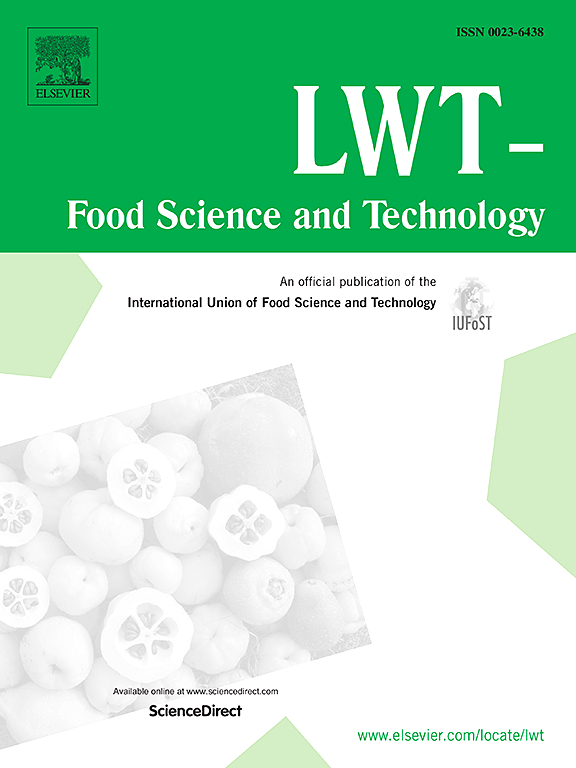Green preparation of size-controllable cellulose nanofibers from buckwheat husks
IF 6
1区 农林科学
Q1 FOOD SCIENCE & TECHNOLOGY
引用次数: 0
Abstract
As a processing waste, buckwheat hulls (BH) have lignocellulose composition and structure similar to eucalyptus wood, which could be served as a potential alternative of wood to produce cellulose-related products. In this study, enzymatic hydrolysis combined with high-pressure homogenizations were used to successfully prepare cellulose nanofibers (CNF) with controllable average diameter from BH. The changes in the physicochemical properties of the fibers, including morphology, functional groups, transmittance, dispersion stability, crystallinity, and thermal stability, were systematically evaluated. Microscopic results showed that the microfiber structure was sufficiently exposed after the purification treatment, and the subsequently enzymatic hydrolysis with an optimal reaction time of 24 h generated a suitable microfiber filament stripping effect. More importantly, when the cycles of homogenization were 1, 5, 10, and 20 times, the average diameters of CNF were 49.98, 40.09, 28.04 and 17.92 nm, respectively. Co-processing was beneficial in increasing CNF yields and reducing costs and energy consumption. Additionally, the thermal stability of samples remained stable after the multi-step treatments, with the initial degradation temperature higher than 300 °C, which are superior to traditional acidic treatments. These findings demonstrate the feasibility of BH as a low-cost source of CNF, and the prospects of the green preparation procedures.

求助全文
约1分钟内获得全文
求助全文
来源期刊

LWT - Food Science and Technology
工程技术-食品科技
CiteScore
11.80
自引率
6.70%
发文量
1724
审稿时长
65 days
期刊介绍:
LWT - Food Science and Technology is an international journal that publishes innovative papers in the fields of food chemistry, biochemistry, microbiology, technology and nutrition. The work described should be innovative either in the approach or in the methods used. The significance of the results either for the science community or for the food industry must also be specified. Contributions written in English are welcomed in the form of review articles, short reviews, research papers, and research notes. Papers featuring animal trials and cell cultures are outside the scope of the journal and will not be considered for publication.
 求助内容:
求助内容: 应助结果提醒方式:
应助结果提醒方式:


